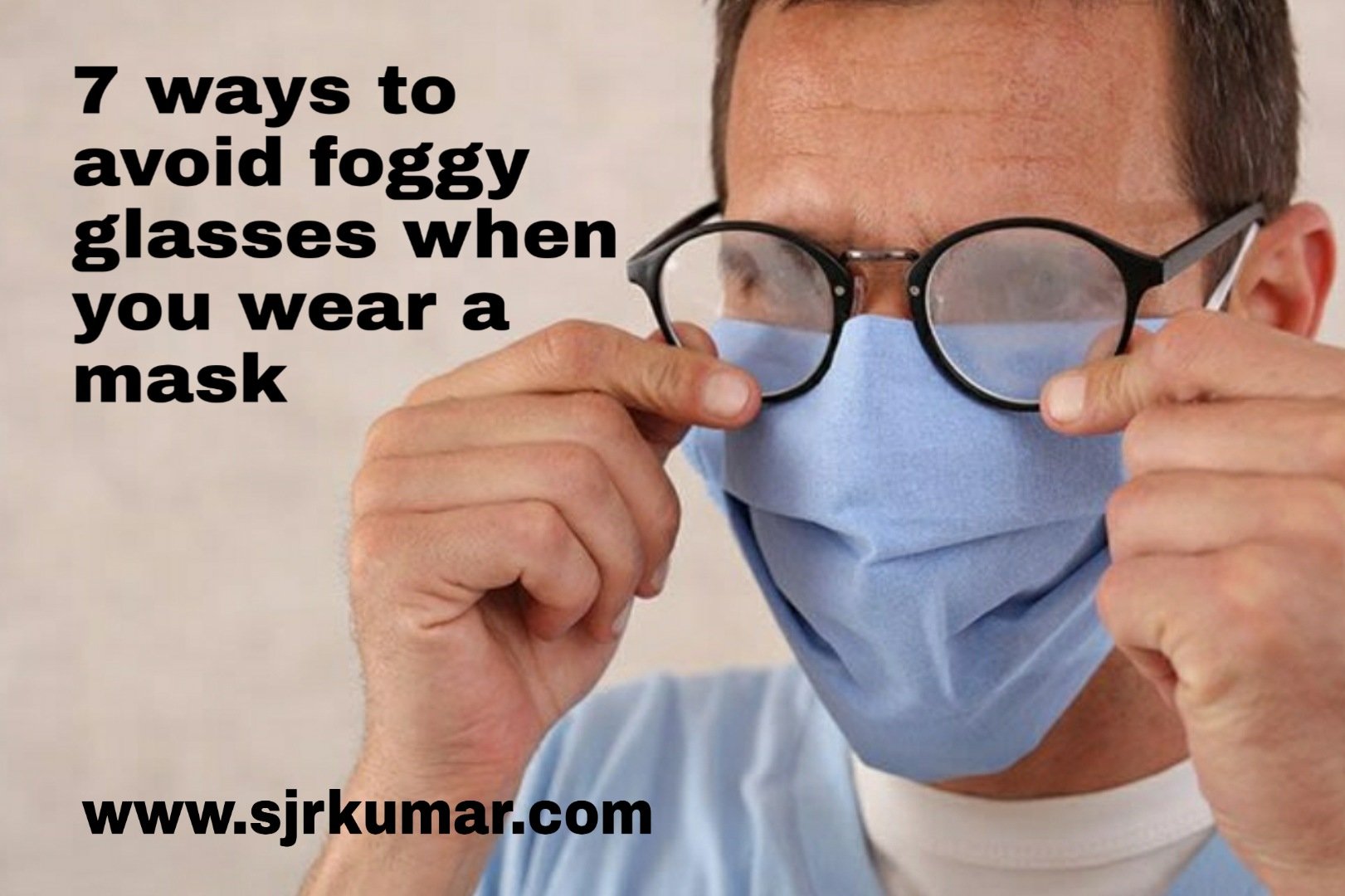While face masks help us avoid unknowingly transmitting coronavirus, millions of eyeglass wearers are discovering the nuisance of mask-induced foggy lenses.
With the World Health Organization (WHO) now recommending the wearing of face masks to curb the spread of COVID-19, fogged-up glasses are a problem affecting a large chunk of the population.
What can you do about your fogged-up glasses?
Here is a compilation of seven tips for lifting the fog from your glasses when you’re wearing a mask, but first let’s go over why your lenses are fogging up in the first place.
Why are my glasses foggy?
Body heat and air flow lead to foggy lenses. When you’re wearing a face mask, you repeatedly breathe out warm air. This air then can sneak out of the top of your mask and steam up the lenses of your glasses. Of course, this can make it difficult to see.
According to a study published in The Annals of The Royal College of Surgeons of England, a face mask directs much of the exhaled air upward.
The “misting” of lenses happens when warm water vapor from your breath lands on the cooler lenses, producing tiny droplets that scatter light and reduce the lenses’ ability to transmit contrast (when light colors remain light and dark colors remain dark).
The droplets form because of the inherent surface tension between the water molecules.
7 ways to avoid foggy glasses
Now that you know why your lenses fog up, let’s review seven ways to prevent this fog when you’re wearing glasses and a face mask.
1. Wash the lenses with soapy water
The study from The Annals of The Royal College of Surgeons of England supplies a simple solution to the foggy-lens problem, which it refers to as an “annoying phenomenon.”
Authors of the study recommend that before slipping on a face mask, you should wash your glasses or sunglasses lenses with soapy water and shake off the excess moisture. Then, let your glasses air dry or gently dry the lenses with a clean microfiber cloth.
Using this method, the lenses shouldn’t fog up once you put on the mask and glasses, the study says. Why? Cleaning the lenses with soapy water leaves a thin film that reduces the “inherent surface tension” and prods the water molecules to form a transparent layer.
To avoid damage, don’t clean your lenses with products like baby shampoo, toothpaste or shaving cream.
2. Seal the mask
A common trick employed by doctors involves sticking a piece of double-sided tape across the bridge of the nose before putting on a mask.
If you place the double-sided tape between the inside of the mask and the bridge of your nose, it will create a better seal. You can also place an additional piece of cellophane or masking tape over the mask as well.
3. Make sure the mask fits well
A loose-fitting mask lets exhaled air head toward your glasses, but a snugly fitting mask can shoot that air out of the bottom or sides of the mask and away from your glasses.
For a better fit, go for masks equipped with moldable pieces around the nose (such as a metal strip) or masks that come in various sizes.
If the mask is well-fitted, it will dramatically help to prevent the amount of hot air that can reach the lenses.
Make sure that your face mask has a snug fit around the nose bridge. The more conformed the mask is around the bridge of your nose, the less of that hot air will end up hitting your lenses.
If you’ve crafted your own cloth mask, create a seal around the nose by inserting a moldable item into the upper part of the mask. This could be a paper clip, pipe cleaner, twist tie or folded piece of aluminum foil.
4. Adjust your glasses
If your glasses have nose pads, you can tweak the pads so that the frames sit slightly farther from your face.
This will allow that hot air to escape instead of getting trapped between your face and the lenses of the glasses.
Experts caution that altering the nose pads may slightly change your vision if you wear glasses with progressive lenses or lenses with a strong prescription. If that happens, you might need to hold your head at a different angle to compensate for the vision change.
5. Try de-fogging products
Applying over-the-counter anti-fogging sprays, waxes and gels to your lenses before putting on your glasses can quickly disperse tiny fog droplets when you’re wearing a mask.
Some work better with different body chemistry, so you may need to try a few brands to see which one works best for you.
Never use anti-fogging products designed for cars or other purposes, as they might ruin your prescription lenses.
6. Breathe downward
Well, it might be awkward, but breathing downward can be a quick ant-fog fix. This sends the air away from your glasses.
How do you breathe downward? Hold your upper lip over your lower lip. Then blow air downward, as if you’re playing a flute.
7. Check out anti-fog lenses
This won’t fix your foggy-lens problem right away, but you might consider buying lenses with an anti-fog coating. An anti-fog coating gives you a hassle-free answer to foggy lenses, regardless of whether the obstructed vision is triggered by a face mask or something else.
SHOP FOR ANTI-FOG LENSES: Visit an optical shop near you or an online eyewear retailer to learn more about and to compare anti-fog lens options.
STAY HOME, STAY SAFE



